By Keith Kowalski & Robert Pulford
Keith Kowalski is Vice President of Technology and Robert Pulford is an Application Engineer with Haydon Switch and Instrument Inc.
The linear step motor, or linear actuator, first came into being in 1968. Since this time, it has found its way into many critical applications, including those that require precise alignment and fluid metering. The basic step motor rotates a magnet rotor core through the use of pulses and an electromagnetic field passing around the core. A linear actuator converts this rotational motion into linear motion, with the precision dependent on the step angle of the rotor and the method chosen to achieve the conversion.
For the linear actuator that uses a screw, precision depends on the thread pitch. Inside a linear actuator, a nut is located in the center of the rotor. The screw engages this nut. For the screw to move axially, it must be constrained from rotating with the nut and rotor assembly by some means. By inhibiting screw rotation, linear motion is achieved as the rotor turns. Such anti-rotation is typically carried out either internally with a captive shaft screw assembly or externally with a nut on the screw shaft that is prevented from rotation, yet free to move along its axis.
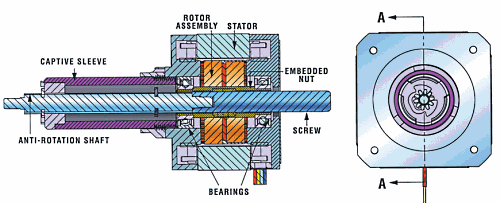
Figure 1. One way to convert rotary motion into linear is through a leadscrew and nut assembly inside the motor. This approach lets you use a “drop in motor” in your designs, eliminating the need for external mechanical linkages. This schematic shows the insides of such a motor.
For simplicity, it makes sense to achieve rotary to linear conversion inside the motor. This approach simplifies the design of many applications by allowing a “drop in motor” capable of precise linear motion without the need to install external mechanical linkages (Figure 1).
The first linear actuator used a ball nut and screw combination. The ball screw typically offers efficiency greater than 90%, while Acme threads offer efficiencies between 20% and 70% depending on thread conditions.
Although ball screws are a highly efficient means to convert rotary motion to linear travel, the ball nut is sensitive to alignment, bulky, and expensive. Therefore, the ball nut is not a practical solution for most applications.

Figure 2. Typically, leadscrews are available in “V” or Acme thread. The “V” thread is not a suitable choice for power transmission because of the thread angles, which are 60 degrees between opposing faces. The Acme thread, on the other hand, is efficient by design. Its thread angle is 29 degrees, which helps decrease losses including friction.
The hybrid step motor-based linear actuator has been around for several years, and like other devices, has its strengths and limitations. The design is simple and compact. It is brushless and therefore non-arcing. This type of linear actuator is also reliable. However, in some applications, these actuators may not be durable without routine maintenance.
There are ways to provide actuators that are highly durable with long life and no maintenance. With a step motors’ brushless design, the only components subjected to wear are the rotor bearings and the thread engagement of the leadscrew and nut assembly. Advances in ball bearings ensure long operational life. Recently, there have been improvements in the life and durability of the leadscrew and mating nut components.
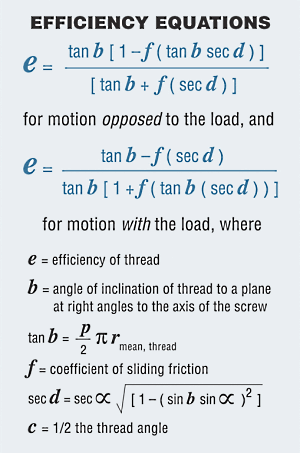 Increased durability
Increased durability
To begin with, it is necessary to take a look at the basic design. A good model for a case study is the size 17 motor, which is at the smaller end of the hybrid stepper size range. Traditionally, a linear actuator is made by machining a hollow shaft from a bearing grade metallic material such as bronze. This hollow shaft has internal threads, which in turn engage the threads of a leadscrew. The hollow shaft is installed along the axis of the rotor. A popular choice for the leadscrew material is stainless steel, which also offers some corrosion resistance. For the most part, leadscrews use machine threads, such as a #10-32, which may be suitable for single or multiple starts, depending on the desired actuator resolution and speed.
The “V” thread is chosen because it is relatively easy to machine and roll form. It is an appropriate choice for manufacturing, however, it is a poor choice for power transmission. A much better thread is the Acme thread.
The Acme thread is more efficient by design. This efficiency decreases losses, including friction, which in turn means less wear and ultimately longer life. The basic screw geometry helps explain this feature. A “V” thread has an angle of 60 degrees between opposing faces, while the Acme is 29 degrees (Figure 2).
Assuming friction, torque and lead angle are the same; a “V” thread will deliver approximately 85% of the force of an Acme. The efficiency is determined using one of the following equations for use with threads having a V shape, dependent of load direction. The ratio is simply calculated by dividing the efficiency of the 60° threads by the 29° threads.
The efficiency calculations do not take into consideration that the surface pressure will be higher on the “V” thread, further increasing losses.
Acme thread leadscrews are generally manufactured for power transmission, so close attention is paid to surface finish, lead accuracy and tolerances. “V” threads are primarily used as fastener threads, so surface finish and straightness are not closely controlled.
A closer look at nuts
Of equal, if not greater importance is the nut that drives the screw. As mentioned earlier, the nut is often embedded in the motor rotor. The traditional nut material is a bearing-grade bronze that lends itself to the required machining of the internal threads. It is a suitable compromise between physical stability and lubricity. Compromise, of course, is the key word since it excels at neither.
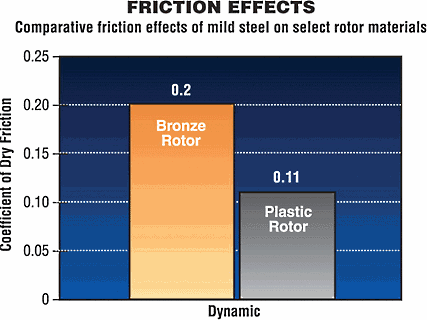
Figure 3. Nuts made from newer engineered plastics enable screw threads to travel with a lower coefficient of friction.
A better material is a lubricated thermoplastic material. With the new engineered plastics, screw threads may now travel with a lower coefficient of friction. Figure 3 contrasts the rotor thread materials’ frictional properties.
Based on this, it would seem obvious; why not use a plastic drive nut? Unfortunately, as good as the plastic is for the threads, it is not a stable enough material for the rotor journals of a hybrid motor. With motor temperature potentially rising to 167° F during operation, the plastic in this case could expand as much as 0.004 in. Brass, on the other hand, may only expand 0.001 in. under the same thermal conditions (Figure 4).

Figure 4. While plastic enables screw threads to move with less friction, when used for rotor journals this material will not handle the internal temperature a hybrid motor can reach. Brass is an apt alternative.
The bearing journals are critical in the hybrid motor design. The hybrid rotor must maintain an air gap of only a few thousandths of an inch for optimal performance. The air gap is the space between the outer diameter of the rotor magnet and the inner diameter of the stator. If the rotor assembly lost concentricity it would rub against the stator wall. Through material selection, you have the benefits of both long thread life and bearing journal stability. Injection molding plastic threads within a metallic rotor assembly can be a choice that offers mutual benefits (Figure 5). This design offers a product with quiet operation, high efficiencies and life expectancies that can be orders of magnitude greater than a bronze nut under identical operating conditions (Figure 6).

Figure 5. Injection molded plastic threads in a metallic rotor assembly can be an alternative to a leadscrew made of all plastic or all brass.

Figure 6. A combination plastic and metallic rotor assembly enables quiet operation, and provides high efficiencies and life expectancies.
Haydon Switch and Instrument Inc.
www.hsi-inc.com
You may also like:
Filed Under: Ballscrews • leadscrews, MECHANICAL POWER TRANSMISSION, Motors • stepper


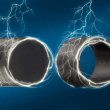




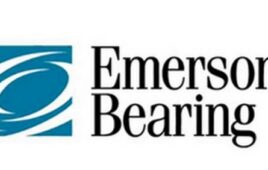
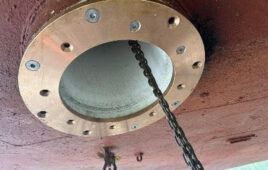
What mechanism can change rotary form to linear form
How we can convert a rotery gear to a linear actuator
The use of linear drives to accomplish circular and linear motion with motors